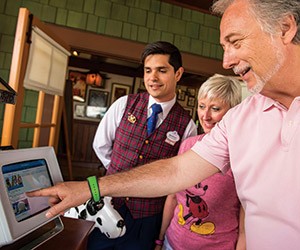You’ve seen them, perhaps almost bumped into them. They’re the people who always seem to be looking down at their smartphones while walking, sitting, eating, and especially during the keynote address at a convention.
But that’s okay. They’re totally paying attention, just doing so the way it’s done in 2015—by immediately sharing what they’re hearing. And more and more that’s just fine, not only with the speaker but also with the event organizers.
“I was at a convention recently and the session moderator said, ‘I want everyone to know that it’s okay if you’re on your phone. In fact, I want you to be on your phone, uploading and sharing from the meeting,’” says Doug McLain, senior vice president of global sales for Discover the Palm Beaches. “Another meeting used an app for polling, so the moderator could poll the audience during the session and get a pulse on the crowd. We all downloaded the app and were polled, and there was complete interaction.”
Indeed, it’s probably the odd meeting now that doesn’t make use of social media or smartphone software of some kind during the various sessions and events. A few years back, many convention-goers were wowed by big-screen pyrotechnics during the keynote; now it’s all about digital connection with their fellow attendees and the outside world during the show.
“Technology has really permeated these live events and social media is clearly an embedded part of them,” says George Aguel, president and CEO of Visit Orlando. “The development of apps for attendees, tweeting during the shows, tweeting before and after, and virtual meetings are very strong.”
Regarding the latter, McLain says one recent meeting in his destination was broadcasting its sessions to 80 countries from the resort.
“So the infusion and power of mobile devices in meetings is really starting to surface,” he says.
Many point to the influence of the Millennial generation, those in their 20s and early 30s, as drivers of this trend toward constant and immediate connectivity.
“They’re the ones who grew up with the smartphones,” says Bonnie King, deputy director of the Space Coast Office of Tourism. “Making the meeting about that connectivity is very important.”
According to McLain, Millennials have been more entrenched in technology.
“They have a greater need for group-think and push-and-pull than previous generations,” he says. “I think the meetings industry has got to react to what is now a balance of Millennials and Boomers in the same room. They’re not going to stand a ‘download’ from a speaker for a straight hour. So we’ve got to be proactive in fostering the technology. Not that we can always control the meeting content.”
There’s an App for That
Being proactive about technology, tourism bureaus throughout Florida are attempting to stay plugged into the latest tech requirements of leisure and group travelers, many through an ongoing process of app development.
Downtown Jacksonville, for one, has a new app detailing what’s hot in the neighborhood, while Charlotte County is launching a new website in April and developing a shopping, dining and recreation app for release this summer.
Also boasting a new website is Visit Sarasota.
“It’s an entirely new look, compatible with smartphones and tablets,” says Vanessa Zigich, meeting and group sales manager for Visit Sarasota County. “We also have an app that we’ve relaunched, and all of it is linked. It’s helpful for both planners and attendees. If you’re not a local, you won’t know when there’s going to be road closures downtown because of an event. Our app will tell you that, in addition to all the information about where to stay, go and what to do.”
PageBreak
Meanwhile, Experience Kissimmee launched a new mobile application of its Official Kissimmee Travel Guide, with detailed descriptions of what the attraction, activity or restaurant has to offer in a format that can easily be shared with contacts or added to a trip itinerary.
“We’ve been very active in getting that information to the attendees and making sure they understand how to download the app,” says Tracy Ward, vice president of sales for Experience Kissimmee. “In addition to that, we provide personalized landing pages on our website that we’ll design for the group and help guide traffic to that Web page, not only to welcome them but to drive attendance.”
In addition, Orlando is releasing a “value app” that attendees can use to save at area venues.
“This is such a big, exciting multidestination place, with so many things to do and places to go, we wanted to offer something that gave people value,” notes Visit Orlando’s Aguel.
Techno Parks
Not surprisingly, those embodiments of progressive technology, the theme parks, are making the most of apps to make things easier and faster for their guests.
Sea World Entertainment, including Busch Gardens Tampa and Sea World Orlando, recently updated its mobile app to include Quick Pay, allowing guests to link their smartphone to a credit card and pay for food and merchandise via their phones.
At Walt Disney World, the MyMagic+ app, along with the website MyDisneyExperience.com, gives attendees the option to make dining reservations and reserve access to select attractions before even leaving home. Recent enhancements of MyMagic+ include letting planners choose a specific color of MagicBand for their groups. Launched last year and about the size of a wristwatch, MagicBands basically act as an all-in-one device for hotel room and theme park entrance, FastPass+ service and for charging food and merchandise to the guest room.
Last summer, Universal Orlando Resort launched an app that provides immediate attraction wait time information, show times and GPS-enabled maps with real park images to help guests find their way. Universal has also introduced free park-wide mobile, high-speed Internet access with Xfinity Wi-Fi.






